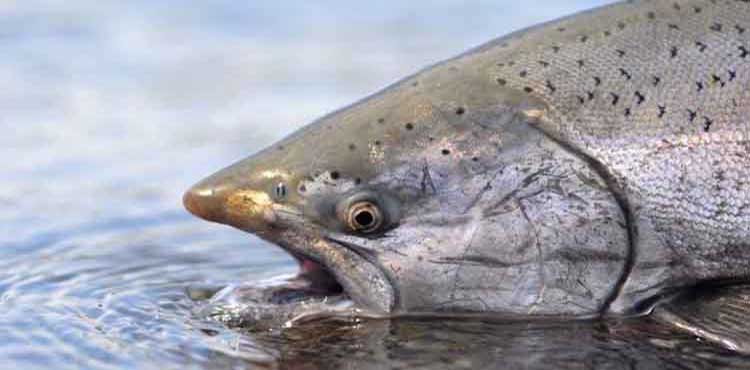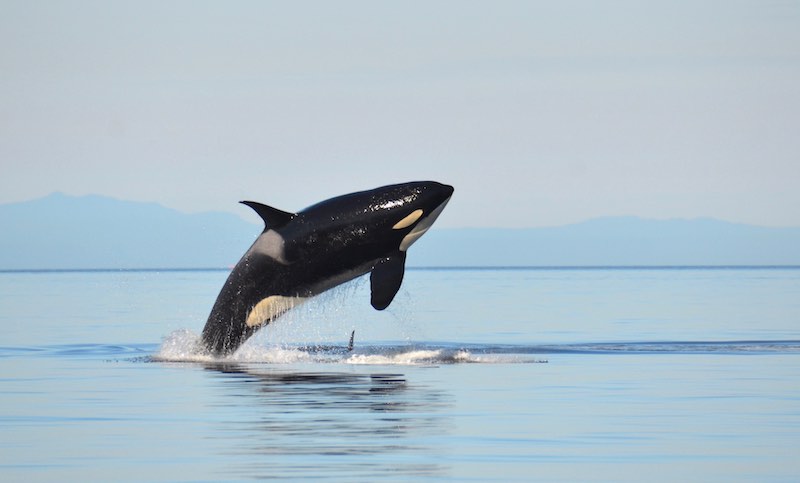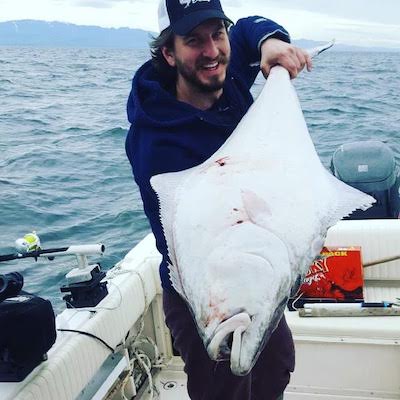
The usual practice when writing an outlook piece like this in mid-winter is to review all the available stock assessment information and, based on past experience, make some informed projections about where and when fishing might be most productive. While that will still be the basis for this look ahead, to a certain extent all bets are off for some parts of southern BC (SBC) because management of Chinook fisheries is moving into uncharted territory, and in mid-January it is hard to have confidence in what the opportunity for 2019 will be.
The background to this is a series of late decisions made by DFO regarding management of recreational Chinook fisheries in the summer of 2018, both in regard to Chinook stocks of concern themselves and also in an effort to provide more Chinook as prey for Southern Resident Killer Whales (SRKW), separate issues but ones that overlap around southern Vancouver Island. Some regulations made no sense whatsoever—for example the finfish closure in large parts of Juan de Fuca Strait that ended all salmon fishing, not just for Chinook but for anything else including a locally productive halibut fishery, the closure of which provided no benefit at all for SRKWs.
In some respects, the situation regarding Chinook stocks in SBC is a Canadian fishery version of the classic story A Tale of Two Cities. Those in the Fraser River, especially the stream-type Chinook with the extended freshwater life-history, are steadily declining regardless of management measures intended to reverse this trend, while Chinook stocks on Vancouver Island are for the most part doing quite well. The Cowichan River Chinook stock in particular has gone from being the south coast problem child to gold star performer in a decade, with returns double or more the escapement target in both the past two years.
The big challenge in managing Chinook fisheries is that all these different stocks are found together at various times and places, with no obvious way to tell them apart. For those who give some thought to the future management of recreational fisheries, the obvious solution to both maintaining recreational Chinook retention opportunity and being responsive to wild stocks of concern is to have a mark-selective fishery for them broadly across SBC, such as we have for coho. However, the policy decision by DFO to proceed hasn’t yet been taken, and it will be at least four years after this has occurred before meaningful numbers of Canadian origin adipose fin-clipped hatchery Chinook are present in the southern BC fishery and, in the meantime, we have to get from here to there, as it were.
Central to what Chinook regulations and opportunity will look like in 2019 was the decision last spring to lower by 25% to 35% against recent year averages the exploitation rate (ER) in 2018 on Fraser Chinook stocks, using several indicator stocks with Coded Wire Tag (CWT) data. The resulting actions included a reduction in the daily limit from 2 to 1 Chinook per day in the Strait of Georgia, the finfish closures and other restrictions referred to earlier, and limit reductions and/or delays in northern BC Chinook fisheries. In many cases the decline in Chinook returns to Fraser River tributaries continued in 2018 despite these measures, however until an exploitation rate analysis has been completed, with results expected in March, we can’t make an objective assessment of the 2018 management regime with implications for the future.
This background is what makes developing predictions for the SBC Chinook fishery an almost impossible task at the time of writing (mid-January), but I will say this. Largely based on the healthy stock status of east coast Vancouver Island (ECVI) Chinook stocks, there was some very productive Chinook fishing in the Strait of Georgia in the spring and summer of 2018, and I have every confidence that the same will be true in 2019. The real question is what the retention opportunity will be.
Along the nearshore and up inlet areas on the west coast of Vancouver Island (WCVI), Chinook fishing is expected to be productive once again, based on a forecast of healthy returns of the hatchery Chinook that dominate production from WCVI rivers. Offshore the fishing should be good also, but because of the presence of passing Fraser River Chinook stocks, there exists the possibility exists of new restrictions. The same positive outlook, combined with management concern, also applies to the northeastern Vancouver Island area, in places like Blackfish Sound and Queen Charlotte Strait.
Stream-type Chinook returning to the Fraser River largely do so through Juan de Fuca Strait. The recreational fishery in the area at very bottom end of the Strait of Georgia and west past Victoria has been subject to significant size and other restrictions for a decade now, and at a minimum these are expected to continue in 2019. Concurrent with this is the fact that this area is the core summer habitat of SKRWs, with increasing management measures that impact the recreational fishery being made to sustain these animals. The recent decision by the federal government to extend the defined SRKW Critical Habitat out to the west as far as Ucluelet has added yet another factor of uncertainty for recreational Chinook fishing opportunity there.
Who would have thought a few years ago that coho might be regarded as a good news story of sorts? But based on management regime stability if nothing else, they can now be so viewed. Management of all salmon fisheries around SBC are framed around what the time and area impact on the Interior Fraser River (IFR) coho stock aggregate is assessed to be, and this requirement will continue into the future as long as Interior Fraser coho are thought to be in a low productivity regime. Despite the absence of wild coho retention for 20 years in those time and areas where IFR coho are thought to be prevalent, these fish only continue at fairly low levels of abundance, with little or no surplus available for harvest. Good coho fishing was had along the WCVI shoreline and in the Strait of Georgia in 2018, indicating improved survival for many stocks. Marked selective fishery (hatchery only) management will continue to frame coho retention opportunity around much of SBC in 2019, but as science work around allowable exploitation rates has progressed, there is now some hope that later season limited wild coho retention opportunity will be developed in the Strait of Georgia and elsewhere in those times and areas when IFR coho are thought not to be present.
Predicting salmon returns is evermore an uncertain business in this time of climate change, and this is especially so for those salmon stocks that migrate into the open ocean away from the continental shelf. These include all pink, sockeye, and chum salmon but also most stream-type Chinook stocks such as those from the upper Fraser River. The succession of warm water events, e.g. El Ninos and the Blob, that have dominated the ocean environment in recent years have created a low productivity environment for salmon there. Against this background sockeye returns are likely to be low, although the forecast for Fraser summer-run fish provide some hope for a limited fishery. Near Port Alberni the forecast is for a return to the Stamp/Somass system large enough to provide for a decent fishery, but this will all depend on the test fishing results.
Being an odd-numbered year, pinks will return to the Fraser River. But the 2017 broodyear return was low, which in combination with uncertain marine conditions suggests there won’t be a big run. Returns to ECVI rivers should be average, with local production supported by eyed-egg transplants from Quinsam hatchery, creating opportunities for local estuary and in-river fisheries.
Questions are always asked about what the halibut fishery in the season ahead is going to be like. As with salmon, halibut in the northeast Pacific Ocean are also going through a low productivity phase. The annual International Pacific Halibut Commission met in late January and as expected the total allowable catch to Canada declined slightly, to 6.83 million pounds resulting in a recreational share of about 900,000 pounds.
When the recreational fishery starts the 2018 regulations will apply until the end of the current license year on March 31, however there may be a change to maximum size and possession limits in 2019 starting April 1 with the new license year. Understanding that the recreational fishery has to stay within its poundage cap, there was significant dissatisfaction in 2018 about the maximum size, 115 cm for the larger of two halibut in possession away from home. It may be that the regulation will be changed to allow for a larger fish but with a possession limit of only one halibut. This will be worked out in discussions between the Sport Fishing Advisory Board and DFO in the near future.
I’m confident that there will be some good salmon fishing around southern BC in 2019 and plan on experiencing my share of it. The big question will be what the management decisions and allowable retention opportunities are, and regrettably these are several months away from being announced.
Visit the Store
$34.99
$34.99
Featured Catch

Joel Unickow halibut (Photo: Rob Frawley Lucky Strike Sportfishing Tofino)










